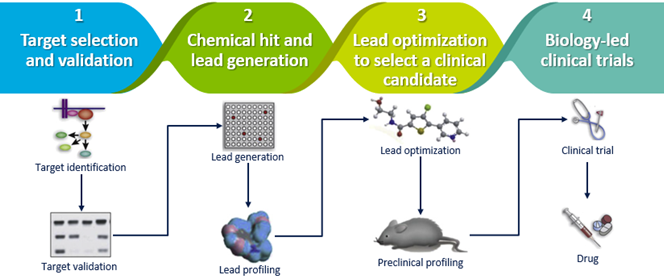SMALL MOLECULES
Therapeutic Potential
- Small molecule drugs are able to pass across cell membranes and reach targets in the cell.2
- Scientists have created a variety of small molecules ranging from enzyme inhibitors to compounds that block the interactions of critical proteins involved in tumor progression.
Relevant Targets
- Hoelder S, et al. Discovery of small molecule cancer drugs: successes, challenges and opportunities. Mol Oncol. 2012;6(2):155-76.
- Yang NJ, Hinner MJ. Getting across the cell membrane: an overview for small molecules, peptides, and proteins. Methods Mol Biol. 2015;1266:29–53.


